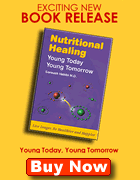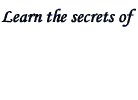 |
Free-radical theory
Rusting within!
For the human body to function it needs to produce energy. For instance, when we walk or talk, blink or think, fight or flight, sing or dance, eat or drink we require energy. In other words whatever we do, for it to happen our body must produce energy. Energy production is a complex process. It happens through absorption of macronutrients (carbohydrates, protein and fat), micronutrients (vitamins, antioxidants, minerals and trace elements) and many hormonal and enzymatic reactions. Oxygen is much needed in the energy cycle. As a result of this process and the process of utilisation of energy, oxygen loses an electron and becomes a free radical. Oxygen as vital as it is for living, excess of it can be detrimental to our health.
Indeed, free radicals are abnormal atoms, which are produced in the process of energy production and utilisation. However, these atoms are abnormal as they are missing an electron in their outer orbit. A normal atom has paired electrons in its outer orbit (Figure 1).

Figure 1 – Comparison between normal and free radical atoms.
Having one unpaired electron in the outer orbit means that these free oxygen radicals are ready to bind to any substance within their vicinity, and start a process, which is called oxidation.
Free radicals have been shown to have violent movements and produce bursts of light within our body.
Free radicals could become more volatile and create more free radicals, and if they are not neutralised fast enough, they could damage cell, cell wall or part of the cell including DNA (deoxyribonucleic acid).
Main Free Radicals
The main free radicals produced in the human cells are:
- Superoxide radical - O2
- Hydroxyl radical - OH
- Nitric Oxide radical - NO
- Peroxyl radical - ROO
Mitochondrion
Mitochondria are tiny oval shape organs within the cytoplasm of the cell. There are 100 quadrillion mitochondria within the body. Mitochondrion is the very place for production of energy. They are constantly busy generating energy for various body functions. However, the more energy they produce the more free radical is created which could destroy mitochondria. Mitochondria are extremely sensitive to free radical damage, as they have neither repair systems nor protective coating. It is said that they are 2000 times more vulnerable to free radical damage than other parts of the cell. When the mitochondria are oxidised they become less efficient and therefore cannot produce sufficient amount of energy, hence one would feel lethargic. As we age the number of mitochondria decreases resulting in less energy and less vitality. |
 |
From this, one concludes that if the mitochondria are kept healthy and vibrant, one should feel on the top of the world. How do we do that? I am going to tell you later.
The process of oxidation is the root cause of degenerative diseases. It is the same process, which causes the body to decay, fruit to rot, iron to rust and butter to turn rancid. I wish to ask you to use your imagination that you have some damaged peaches sitting on the kitchen table. Monitor them every alternate day to see the process of oxidation. As you can see on day one, only a small area of the peaches is bruised, and every day the bruising and decay is expanding more. On the fifth day the fruit is so badly damaged that it cannot defend itself and has developed white material on the surface which is most likely fungal infection. These peaches are no longer edible, hence they have to be buried in the bin.
In the same manner if the process of oxidation within the human body is not prevented, the end result will be degenerative disease, suffering and death by torture.
One of the best analogies to illustrate oxidative stress is used by Dr. Michael Colgan, which has been reported by Dr. Ray D. Strand in his book called Bionutrition.5
Imagine you are sitting in front of your wooden fireplace on a cold wintry night. As you are enjoying the warmth, the flame and poetic beauty of the fire, you observe that every now and then a spark flies off and a cinder is released. This free cinder drops onto your carpet and it will cause a very tiny, microscopic and superficial burn. However, if this is not prevented, over the years it can create a large hole in the carpet. This cinder is a free radical and the carpet is your body. In other words we are rotting from inside without realising. This is what is happening to us.
Our cells are continually being assaulted by free radicals, which overwhelm our natural antioxidant system.
Free radicals have been incriminated in more than one hundred disease conditions in humans. These include premature aging, atherosclerosis, coronary heart disease, stroke, diabetes, cancer, arthritis, Alzheimer’s disease, Parkinson’s disease, Crohn’s disease, and many more. Depending on what part of the body is exposed to free radical damage, the relevant disease will follow. For instance, smoking is a major predisposing factor in the development of heart attack. This is mainly due to exponential free radical production as a result of smoking, hence damage to the coronary arteries.
What causes free radical production?
For more detailed information and specific recommendations, please [click here] to become a member of DrHabibi.com
|
 |





